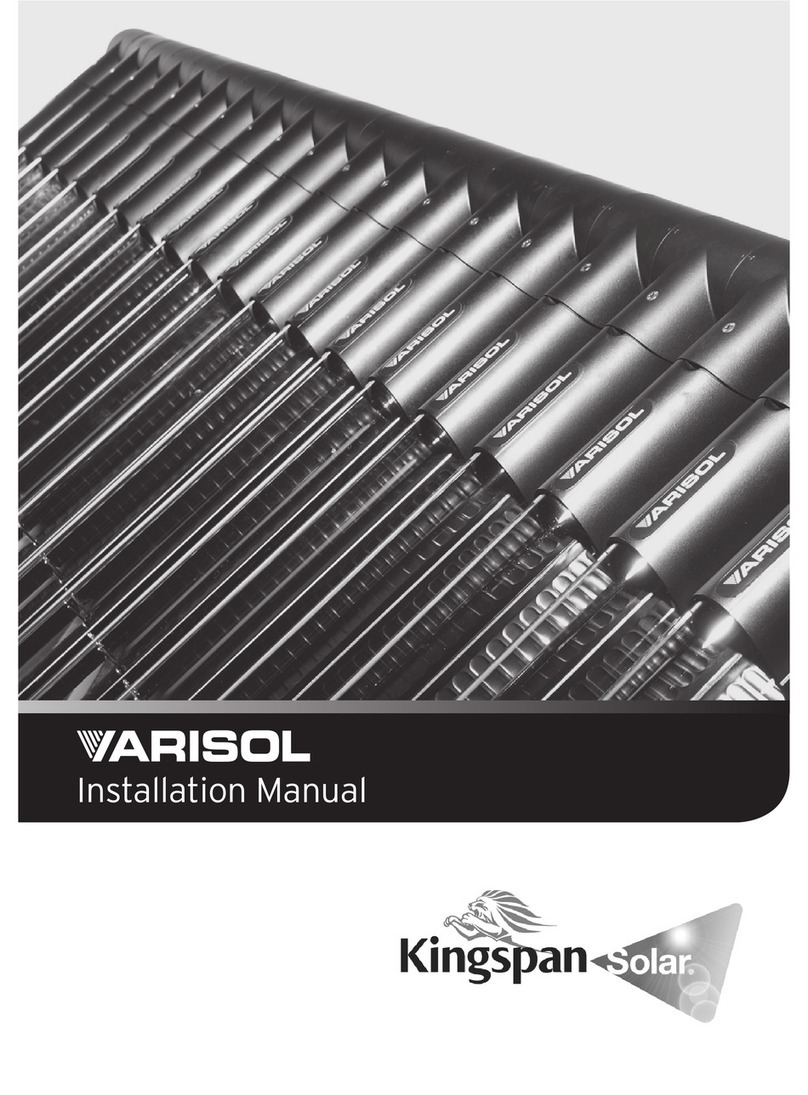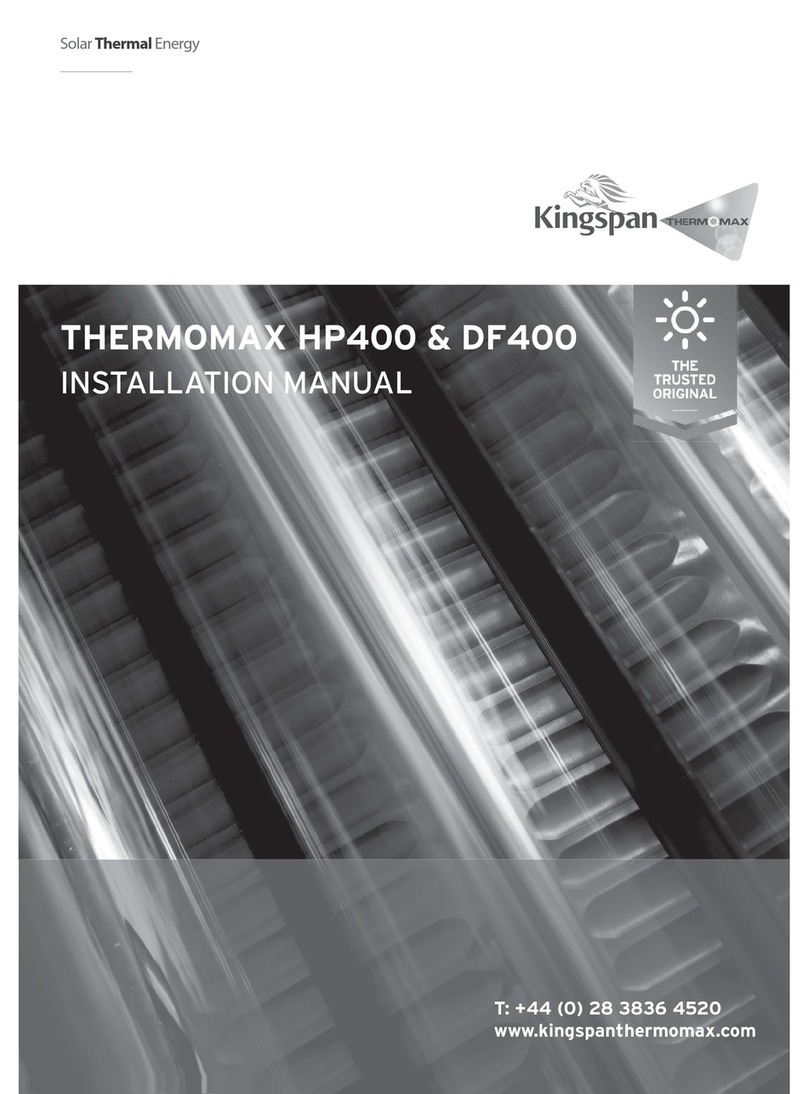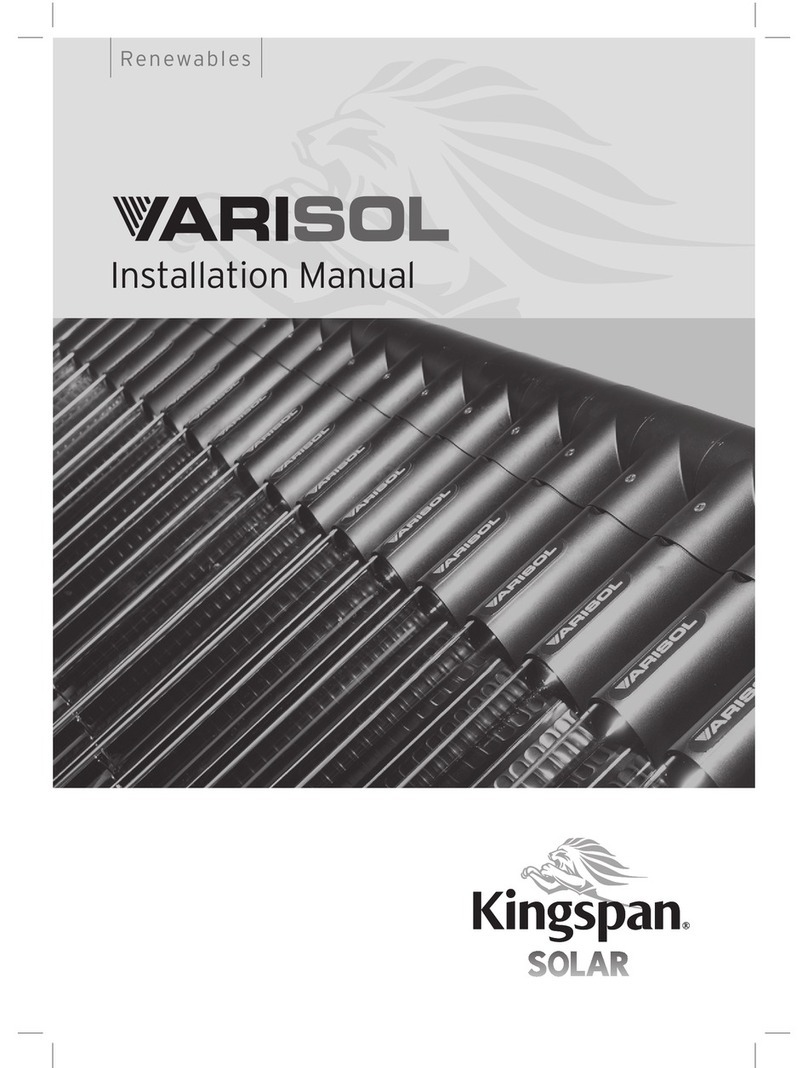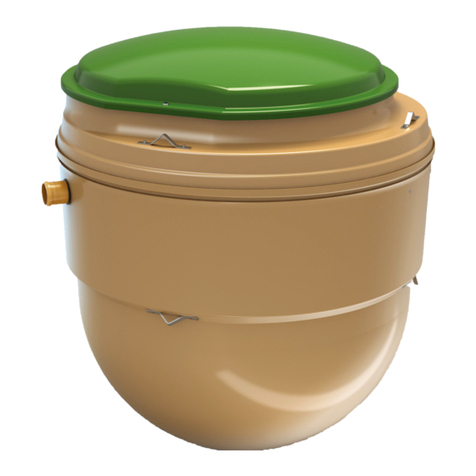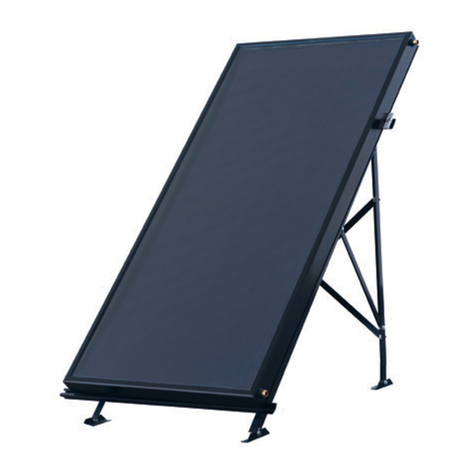Solar hot water systems should be designed and sized correctly before commencing the
installation. Proper design will ensure that a system is correctly sized to provide many years
of optimised performance and most or all of the required hot water when the most solar
radiation is available. However a supplementary heating system such as oil or gas boiler,
heat pump or wood boiler is required for months which have less solar radiation.
For large systems, Kingspan provide a system design service to its Accredited Installer
Network and technical design consultants. Please visit www.kingspansolar.com to locate an
Accredited Installer or distributor in your area.
This guide will illustrate and explain how a system should be installed to conform with the
Kingspan Renewables manufacturer guidelines for the Varisol Collector.
Using this guide
Stages of a solar installation are described in the following pages, with illustrations
where necessary to explain how to install the relevant components, and contains general
recommendations and important safety information.
Handling Guidance
•Tubeboxesshouldbetransportedhorizontally.
•Heavygoodsshouldnotbeloadedontopofthekitboxes.
•Careshould be taken when opening boxes to prevent scratches or sudden
shocks to the glass.
•Donotusesharpobjectstoopenthetubeboxes.
Installation Guidance
•Unpackandinstalltubesonlyaftertheroofkitandpipeworkhasbeeninstalled.
•WithHPtubesonly,tubesmayberotatedafterthesystemhasbeenlled,
pressure tested and is ready for operation.
•Do not leave the solar collector exposed to solar radiation when the solar loop and
collector have been drained. Collectors left exposed in a dry state must be covered to
prevent possible long term damage.
•HPtubesmusthaveaminimumelevationof20°andandmaximumof70°
•Thedarkbluesideofthecopperwithinthetubeistheactivesurface.
•FortheDFsystem,aheatdissipationloop(heatdump)isrecommended
•Thepipework of the solar collector loop is to be earthed and the collector is to be lightning
protected in accordance to local regulations.
For further technical support please contact the following numbers,
Ireland - 1800 812 718 or UK – 0845 812 0007.
Health and Safety Precautions
A solar panel installation must be performed in accordance with all Health & Safety legislation
andlocalbuilding/planningregulationsfortherelevantjurisdiction.
Furthermore, the necessary electrical work required to install control equipment should be
undertaken by a qualified electrical contractor.
Introduction
01


















